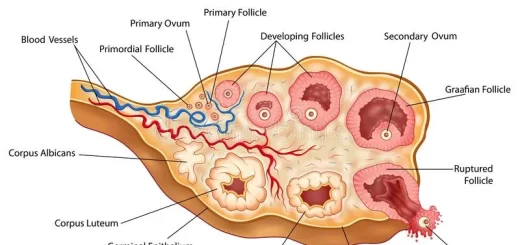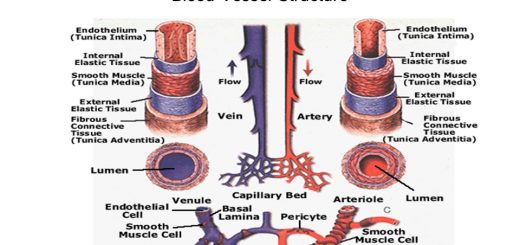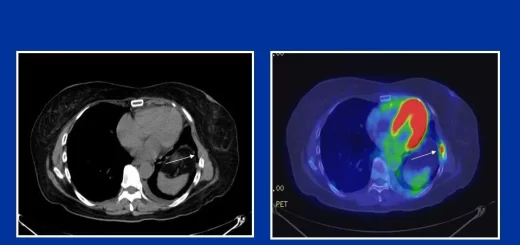Changes occurring in a nerve during activity, compound action potential vs Action potential
The nervous system consists of the peripheral nervous system & central nervous system, central nervous system is made up of the brain, spinal cord, and nerves, The peripheral nervous system consists of sensory neurons, clusters of neurons called ganglia, and other nerves that connect to one another as well as the rest of the central nervous system.
Nerves
These nerves, and cells, are called neurons, they send messages throughout your body. All nerves are important for proper day-to-day functioning, but there are two groups of nerves chiropractors focus on the most: cranial and spinal nerves.
Changes occurring in a nerve during activity
- Electrical changes (Action potential).
- Excitability changes.
- Metabolic changes.
- Thermal changes (Heat production).
Action potential
The electrical changes accompanying the propagation of excitation waves are called the action potential. These changes can be recorded by two microelectrodes, one electrode is placed on the outer surface of the membrane and the other on the inner surface, and the following changed are shown:
Latent period
The latent period represents the time taken by the excitation wave to travel from the site of stimulation (stimulus artifact to the recording electrodes. During this period there is no change in the membrane potential occurring until the excitation wave reaches the recording electrodes. The true latent period of a nerve is about 3-1 msec.
The duration of the latent period is proportionate to the distance between the stimulating and recording electrodes and inversely proportionate to the speed of conduction. By dividing the distance between the stimulated and the recording points over the duration of the latent period we get the speed of nerve impulses.
Spike potential
Spike potential is a large wave of short duration, which is synchronous with the passage of excitation waves along the nerve fiber. It consists of:
a. Ascending limb (depolarization phase):
- When the excitation wave reaches the recording electrode on the outer surface of the nerve, the membrane potential decreases and becomes less than -70 mv. This is known as depolarization.
- The rate of depolarization gradually increases and the membrane potential drops from -70 mv to the range of -50 to -55 mv. The point at which this change in rate occurs is called the Firing Level.
- Rapid complete depolarization of the membrane occurs i.e. the potential difference between the outer and inner surface of the membrane is zero (isopotential).
- Reversal of polarity or overshoot occurs i.e. the membrane potential is reversed, and the outer side of the membrane becomes negatively charged in relation to the inner side, which is positively charged and the potential difference is +35 mv. The magnitude of action potential is therefore -70 +35 =105mv.
Explanation of depolarization phase:
- At rest, all the voltage-gated Na+, and K+ channels are closed.
- Excitation of the nerve with a current of minimal or threshold intensity leads to instant activation of sodium channels (increase membrane permeability to Na+) and allow up to 500 fold increase in sodium conductance (Na+ influx).
- The increase in membrane permeability to Na+ ions is voltage-dependent, so that the closer the membrane potential to the firing level the greater the permeability of the membrane to Na+ ions, leading to depolarization of the membrane followed by a reversal of polarity. Na+) influx coincides with the ascending limb of the spike.
b. Descending limb (repolarization phase):
- The membrane potential falls rabidly towards the resting level (repolarization).
- When repolarization is about 70% completed, the rate of repolarization decreases and approaches the resting level more slowly. Repolarization can be defined as the restoration of the normal resting polarized state of the membrane.
Explanation of repolarization phase:
- Within a fraction of a second, after the membrane becomes highly permeable to sodium ions, a positive intracellular charge opposes further Na+ entry. Sodium inactivation gates of Na+ channels close.
- As sodium gates close, the slow voltage-sensitive K+ gates open and K+ leaves the cell following its electrochemical gradient, and the internal negativity of the neuron is restored. K+ outflux coincides with the descending limb of the spike.
- Re-excitation of the membrane cannot occur unless the membrane is repolarized.
After hyperpolarization = undershoot
- After reaching the previous resting level, the inner side of the membrane becomes more negative compared to the inner side at resting potential with the potential moving even farther from 0 mv i.e. a change from -70 to -80 mv. This prolonged state is known as the after hyperpolarization or undershoot then, the membrane resumes its resting potential gradually.
- It is accompanied by decreased excitability of the nerve.
Causes of after hyperpolarization
- K+ channels don’t close immediately in response to a change in membrane potential; rather, voltage-gated potassium channels have a delayed response, such that K+ continues to flow out, even after the membrane has fully repolarized.
- Active transport of Na+ out by means of the sodium pump
Thus, 2 positive ions (Na+ and K+) are present on the outer surface of the nerve creating a state of hyperpolarization. The whole sequence of potential changes is called the action potential, the spike lasts 2-4 msec. Repolarization restores the resting electrical conditions of the neuron but does not restore the resting ionic conditions. Ionic redistribution is accomplished by the sodium-potassium pump following repolarization.
All or none rule (All or nothing principle)
Stimulation of a single nerve fiber by a stimulus of threshold (minimal) intensity or over gives a maximal response and no more. Subthreshold or subminimal stimulus gives no response at all. So, the single nerve fiber either responds maximally or not at all according to the intensity of the stimulus.
The all or non-rule can be also applied to each single muscle fiber inside a bundle of skeletal muscle fibers supplied by the same neuron (motor unit), cardiac muscle, and certain types of smooth muscles with gap junction.
We can’t apply the same principle on the mixed nerve trunk and the whole skeletal muscle, because increasing the intensity of the stimulus from threshold or minimal to maximal increases the magnitude of the response. Subthreshold stimuli give no response at all.
It is noted that the single fiber inside the nerve trunk or the motor unit in a whole skeletal muscle obeys the all or non-rule. The gradual increase in the response in the case of nerve trunk and the whole skeletal muscle depends on the number of the stimulated or activated fibers by threshold or submaximal, i.e when the stimuli are of threshold intensity, the most excitable fibers are stimulated and a small action potential is recorded.
As the intensity of the stimulus increases the magnitude of the action potential shows a proportional increase until the stimulus is strong enough to stimulate all nerve fibers present in the mixed nerve. So, maximal stimulus excites all the fibers giving maximal response and no more.
General criteria of the nerve action potential
- It follows the all or none law
- It is induced by a single Threshold stimulus.
- It is propagation.
- It is associated with excitability changes.
- It is nerve summated.
- It has a fixed duration and amplitude.
- It has a constant speed of conduction.
Local response or local excitatory state (graded potential)
Subthreshold stimuli are not able to produce an action potential, but they don’t pass without any effect they produce a graded potential which has the following characteristics:
- Its magnitude and duration are proportionate to the strength of the stimulus = graded response.
- It produces a slight decrease in the RMP (below the firing level).
- It produces a slight increase in excitability (below the level which produces a response).
- Graded potentials die out over short distances (the spread of graded potential gradually decreases).
- Graded potentials are not followed by a refractory period so, the application of multiple subthreshold stimuli can be summated to give a response (when reaching the firing level), this is called temporal summation.
Graded potentials are local changes in membrane potential that occur in varying grades or degrees of magnitude or strength. For example, membrane potential could change from -70 to -60 mv (a 10 mv graded potential).
Compound action potential
When a mixed nerve trunk (containing motor and sensory fibers including myelinated and non-myelinated fibers) is stimulated, the spike potential was found to be of a compound nature, it is made up of several waves.
The different fibers in a nerve trunk conduct at different velocities and the impulses proportionated by them are separated according to their relative velocities.
The compound nature of the potential in a mixed nerve trunk is analyzed into 3 main waves A, B, and C. Each wave belongs to a group of fibers, group A conducts faster followed by B and lastly Group.
The A group is further subdivided into alpha, beta, gamma, and delta; the faster fibers give spikes of higher magnitude and shorter duration. these differences are related to differences in the diameter of the fibers.
Generally speaking, it can be stated that the larger the diameter, the greater is the velocity of conduction; the bigger is the magnitude of action potential and the shorter is the duration of the spike.
Excitable Tissues & factors involved in production of RMP (Resting membrane potential)
Peripheral nerve (Nerve trunk) types, structure, function & Response of neurons to injury
Nervous tissues function, structure, types of Neurons & Nervous fibers
Autonomic nervous system, Reflex action types & Autonomic ganglia function
Excitability, Factors affecting the excitability of the nerve fiber & Properties of the nerve



